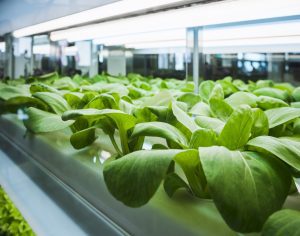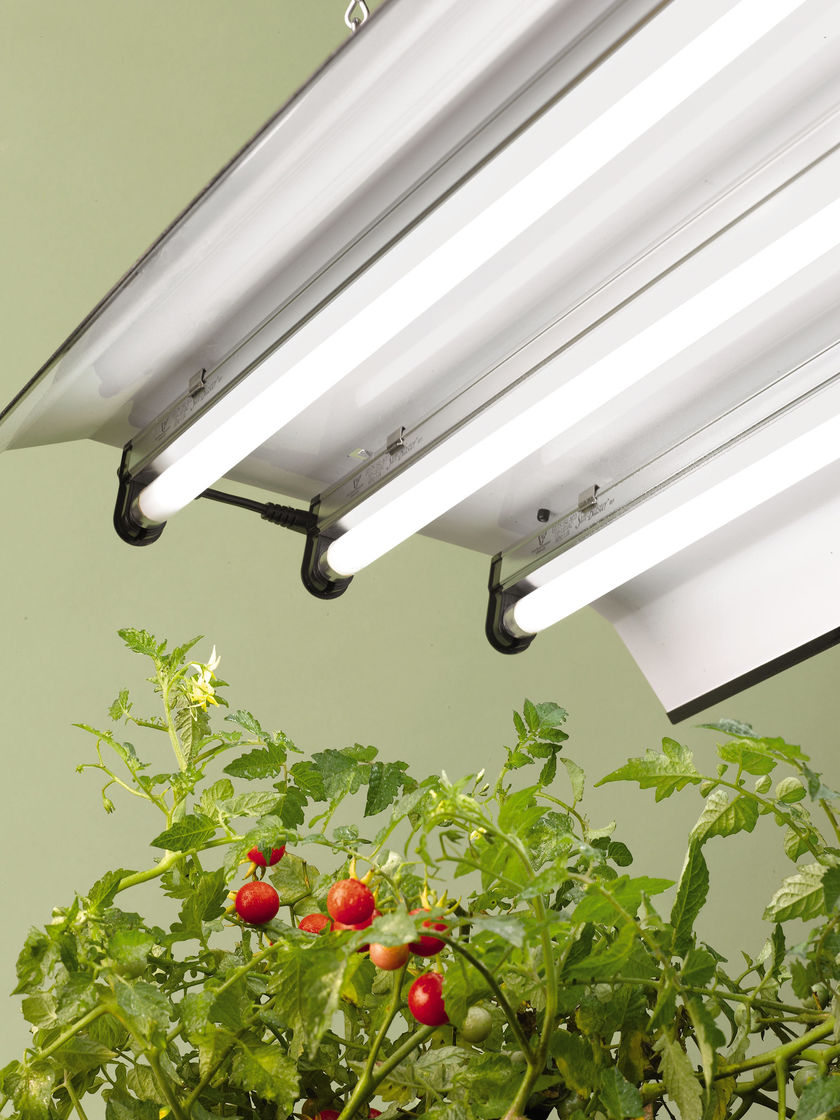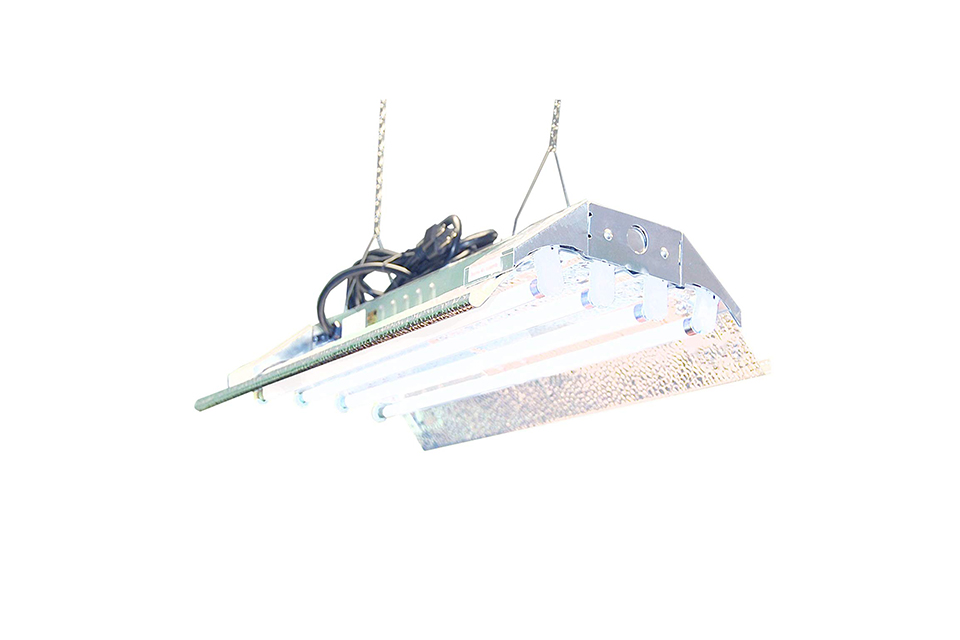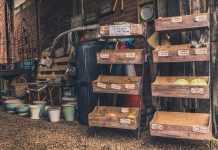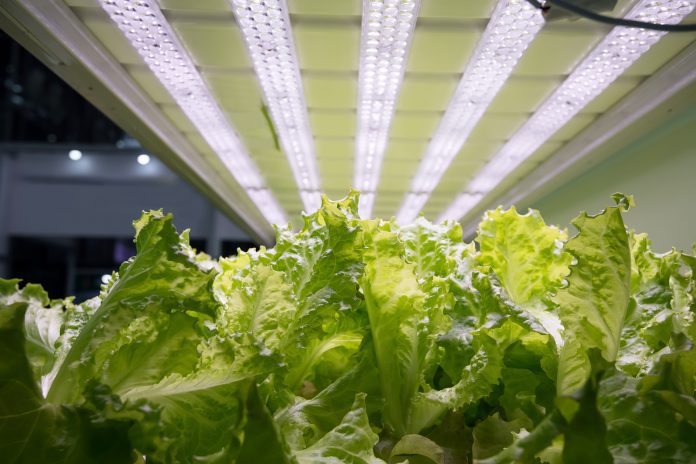
Whether you’ve created a vertical garden in your home or want to start seedlings for outdoors come springtime, you’ll find that a CFL grow light can help you reach your gardening goals. Indoor gardeners have been using grow lights to nurture their plants in less than optimal conditions for decades. Grow lamps provide the unique UV rays that garden plants need to grow when they don’t receive natural sunlight.
When growing indoors, you may find that you quickly run out of sunny window space. Adding regular indoor lighting helps a little. However, you won’t get the rapid, healthy growth you need to give your seedlings a good start. And trying to grow flowers or vegetables indoors without a grow light is nearly impossible.
What Is a CFL Grow Light?
No products found.Compact fluorescent lamps (CFL), is an inexpensive source of light for nurturing plants indoors. If you don’t have a lot of room for indoor gardening, they can provide the best results for very little money. While incandescent grow bulbs make an excellent light source, they use a lot of electricity and generate a lot of heat. That’s not the best choice for gardening in your home.
A CFL grow light will put off less heat and use less electricity. However, you need to be sure to use the right type of CFL when growing indoors. In some cases, a CFL grow light is not your best choice. In others, you’ll need to change the lamp you’re using to induce blooms and fruiting.
What Type of CFL Should You Use?
Your indoor garden requires a broad spectrum of light “colors” to grow seedlings to flowering plants. Violet-blue light encourages photosynthesis and the production of chlorophyll. Red light induces the production of buds and flowers, which eventually develop into fruits.
CFL lamps come in three “colors.” The most common is a warm, soft white, which mimics the color of incandescent lighting. You’ll find cool, neutral, bright white lamps used in work environments and kitchens. Daylight, or “natural” colored CFLs are the third type. For growing plants indoors, you’ll want to use either the daylight or the soft white color bulbs. Together, both types of lamps will provide the full spectrum of light types you need for growing plants indoors.
When shopping, look at the label for the Kelvin rating, which indicates the color spectrum the lamp produces. The higher the number, the cooler the light. In other words, the more “blue” the light. Lower numbers indicate warm light with more red light than blue. You can also find a CFL grow light that offers a combination and produces a broad spectrum of light colors.
When to Use a CFL Grow Light
Daylight bulbs, measured at 5000-6500 Kelvin, provide the right kind of light when your plants are first growing leaves and stems. This is called the “vegetative” phase. Your plants grow from seeds to seedlings to fully developed plants, and need the right amount of cool light to grow greenery.
Warm white lamps, measured at 2700 to 3000 Kelvin, are perfect for the flowering phase of your indoor garden. Whether you’re growing flowers or food, your plants will produce buds and flowers to develop seeds or fruits with seeds inside. This warmer light more closely mimics the color of sunlight late in the season as plants in nature begin to flower and fruit. This is called the “bloom” stage.
What to look for when buying one
You’ll see a number of CFL grow bulbs in stores or online that provide the right color light for growing plants indoors. For the most part, you’ll see those listed at 6500K (daylight) and 2900K (warm white). You may want to choose one of the combination bulbs that offers full spectrum. As explained above, the ones you choose depends on the type of plants in your garden, as well as their stage of growth.
When to use a daylight CFL grow light
Daylight spectrum, which encourages the vegetative phase, is your best choice for raising seedlings for transplanting outdoors. While you may not need to use them until your seeds have sprouted, they’ll need some light once they begin to set their first true leaves.
Daylight bulbs are also a great choice for growing leafy greens indoors. Lettuce, spinach, and kale do just fine with only a daylight spectrum CFL grow light. Because they grow to harvest quickly they make an excellent indoor crop. Many home gardeners choose to grow salad greens indoors during the hotter months of summer. During those months, lettuce and spinach tend to suffer or bolt. An indoor vertical garden with adequate CFL grow light coverage can result in a year-round harvest of fresh salads.
When to use a warm white CFL grow light
Once your plants are ready to flower, add sufficient warm white light to encourage budding. This will provide the red light they need to put forth seed and fruit. There are some downfalls during this stage, however. Keep in mind that although a warm white CFL grow light is the right light for the bloom stage, you’ll need quite a few of them to induce flowers and vegetables. You may need to set up additional fixtures to get a decent harvest during this stage.
CFL Grow Light Limitations
Whether you’re using cool or warm CFLs, note that the shape of the bulb means that CFLs have limitations. Unlike standard fluorescent tubes, they don’t disperse light in a broad pattern. While tube fluorescent bulbs provide a wide swath of light, CFLs have a narrower band of coverage. This means you may need several CFL grow lights if you have more than one plant. You may need to set up as many as two bulbs per plant during the bloom stage to induce any budding at all.
CFL Grow Light Advantages
No products found.The CFL compensates for its lack of intensity by being much cheaper and easier to set up. You won’t need to purchase any expensive panel fixtures for CFL lamps, as you would with tubes. Your CFL grow light will fit conveniently into any standard fixture, including inexpensive shop lights. These convenient fixtures provide a reflector dome which makes them easy to move and adjust as your plants grow. Tube florescent fixtures require support and installation, and come with a host of maintenance issues such as ballast replacement.
Another advantage of CFL grow lights over tubes is that you can easily break down your set up when necessary. If you need to tidy up for visitors, it’s much easier to pack up and store your shop lights in a closet or garage than removing a tube fixture hanging from the ceiling. And if you’re just growing a violet or a small tray of salad greens, you can use any attractive light fixture you own to blend into your décor. You can even add a homemade reflector under the shade to take better advantage of your wattage. You can paint the inside with reflective silver paint or simply use aluminum foil to line the shade.
CFL Grow Light Advantages
For indoor gardening, you’ll need between 30 to 50 watts per square foot of indoor garden. Leafy greens require about 30 to 40 watts of light, while tomatoes, cucumbers, and other “fruiting” vegetables need 40 to 50 watts.
When calculating your grow light requirements, use the true wattage on your CFL grow light bulbs rather than the replacement wattage. You’ll find labels stating that your CFL replaces a 100-watt incandescent and uses 23 watts during operation. The true wattage, 23, is the number you use to calculate your requirements.
Mounting Your CFL Grow Lights
Because they put off so little heat, you can lower your CFL grow light to just a few inches from your plants. Indoor gardening requires some compensation for the lack of real sunshine. Placing your CFL bulbs three to six inches away helps to make up for the lack.
Timing Your CFL Grow Light
Although outdoor gardening requires only six to eight hours of sunlight for even the most voracious vegetable plants, indoor gardening requires many more. Purchase a timer to ensure that your indoor vertical garden gets at least 12 to 14 hours of artificial light every day. It’s a small investment to make to ensure the best results. But, don’t be tempted to leave the lights on all night. Your plants need at least six hours of “rest” every day in the darkness to grow at their best.
Your CFL Grow Light in a Nutshell
CFLs have their pros and cons and best uses. They’re absolutely perfect for starting seedlings during the winter before transplanting outdoors. They provide just enough of the right kind of light spectrum for early growth when placed thoughtfully with the proper reflectors.
A CFL grow light is also an excellent choice for growing cool-weather leafy greens like lettuce and spinach. Keeping them indoors provides them with the temperature range that helps them thrive. A daylight CFL bulb or two will provide you with fresh salad greens indoors all year around.
Many experts discourage CFL grow lights for vegetable plants because they just aren’t an efficient use of your money. For anything more than a tray of greens or a small flowering plant like an orchid or violet, you’ll need to hook up an overwhelming number of lamps to get a reasonable harvest.
You’ll also find that because of their limited dispersion pattern, they can be inconvenient to use in only but the smallest indoor vertical garden. If you’re planning to create a large garden with a wide range of plants, you may be better served by tube fluorescent lights or even LED grow lamps.
Making the Most of Your CFL Grow Light
While CFLs have several advantages, they certainly have their limitations. If you only have a few plants indoors and can dedicate a fixture for each one, you’ll find them efficient and affordable. They also won’t add any heat load to your air conditioning system during the summer. If you’re slowly adding on to an indoor garden, purchasing and installing an additional CFL grow light each time you add on another plant might be a judicious choice for expanding on a budget. This is particularly true if you don’t mind the appearance of many shop lights in your home.
However, for large indoor gardens, a CFL grow light might not be your best choice. If you’re ambitious and want a large indoor garden immediately, you may want to choose tube fixtures or even LED lamps. Both use relatively little electricity and put off less heat than standard incandescent grow lamps. Your decision will depend on your budget and the ambition of your gardening plans. We hope we’ve covered the salient points you need to make a decision that works best for you. If you’ve used a CFL grow light, please let us know about your experience in the comments below, good or bad. Our readers can share their own tips and stories with indoor gardening to learn how to make it a success.
Last update on 2022-01-27 at 20:02 / Affiliate links / Images from Amazon Product Advertising API

